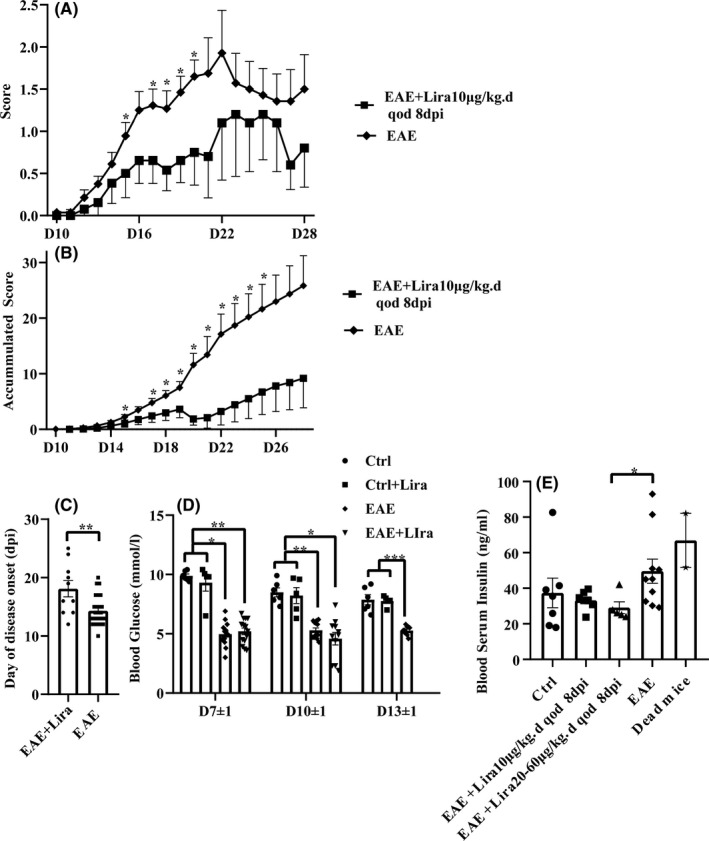FIGURE 1.

Liraglutide (Lira) administration ameliorated the disease score of experimental autoimmune encephalitis (EAE) mice and delayed the disease onset. EAE induction could reduce random blood glucose level, while Lira administration did not have an extra hypoglycemic activity. Certain dosages of Lira had insulin lowering effect compared with EAE group. Lira was administered subcutaneously (i.c.) daily (qd) or one time in 2 days (qod) after certain time points days postimmunisation (dpi). Data were shown in the form of mean ± SEM. * represents p < 0.05, ** represents p < 0.01, *** represents p < 0.001. (A–C) shows disease score, accumulated disease score and disease onset of EAE + Lira group and EAE group, n = 13–28 per group. The rating scale is 1 (paralyzed tail); 2 (posterior limb paresis); 3 (posterior limb paraplegia); 4 (posterior limb paraplegia with forelimb weakness or paralysis); 5 (moribund, or dead). Mice judged between grades received intermediate scores (±0.5). (D) shows random blood glucose level among different groups in serial time points, n = 5–15 per group. (E) shows random blood insulin level when mice were sacrificed, n = 5–10 per group. In addition, two unexpected died mice after Lira administration were tested
